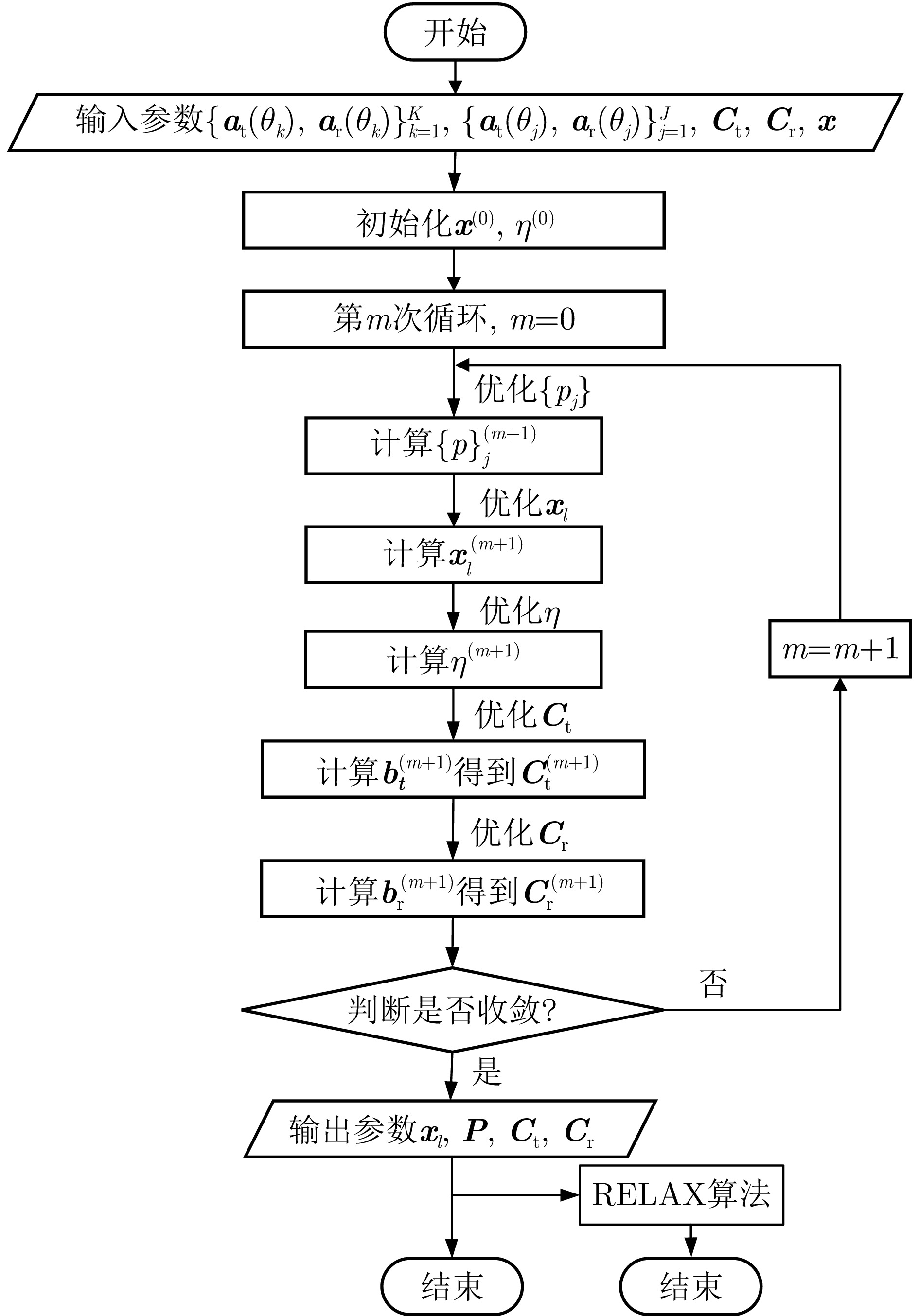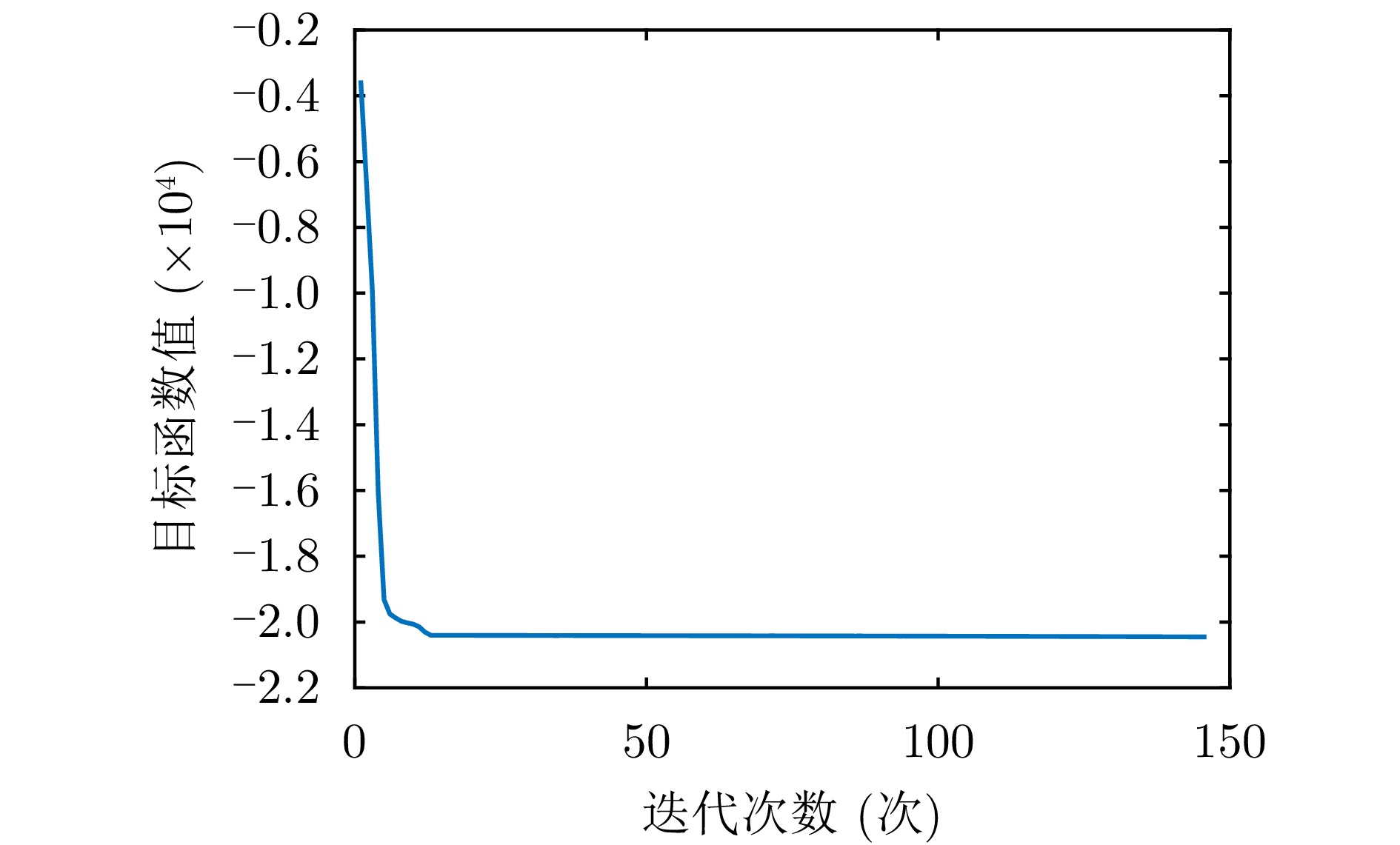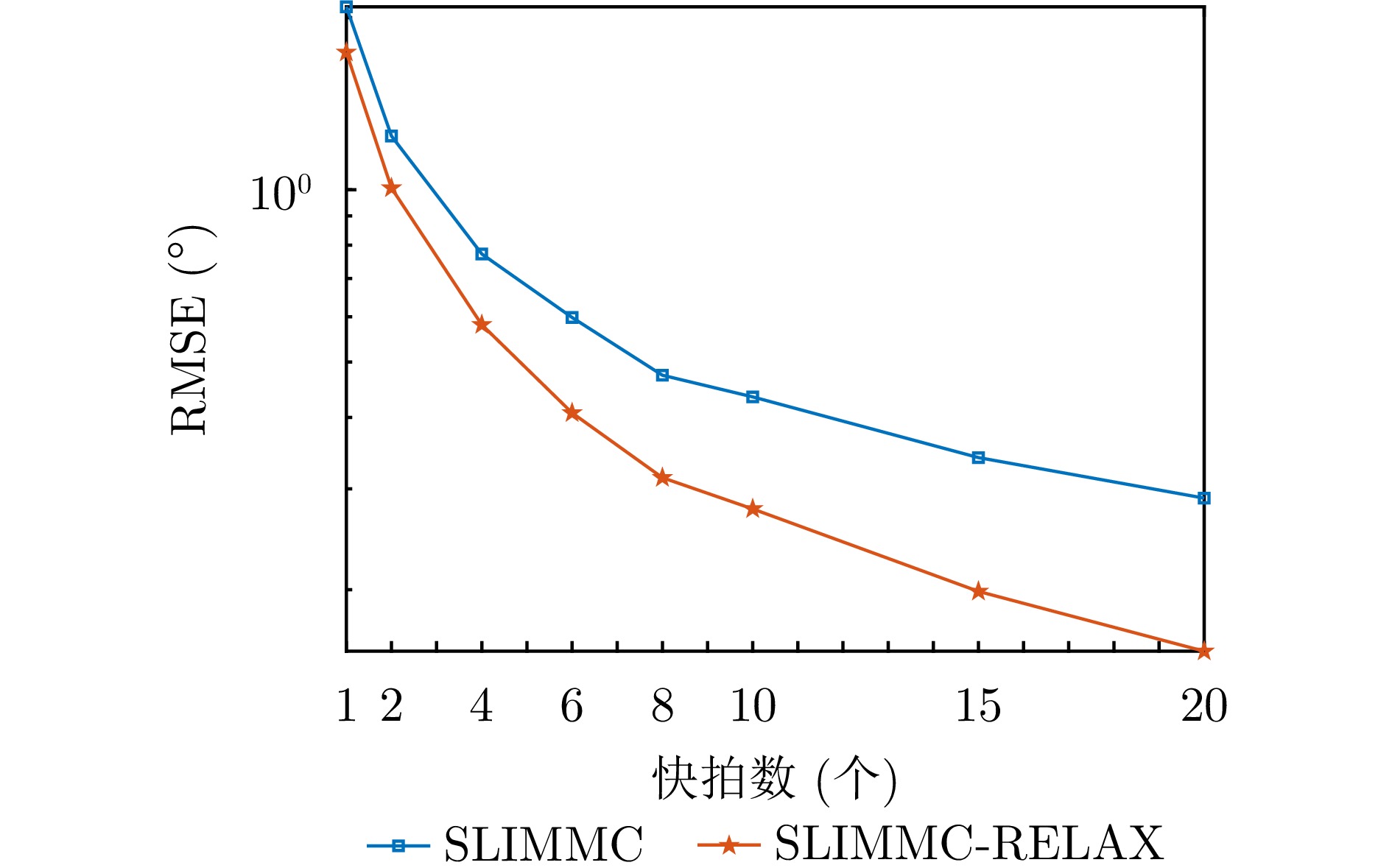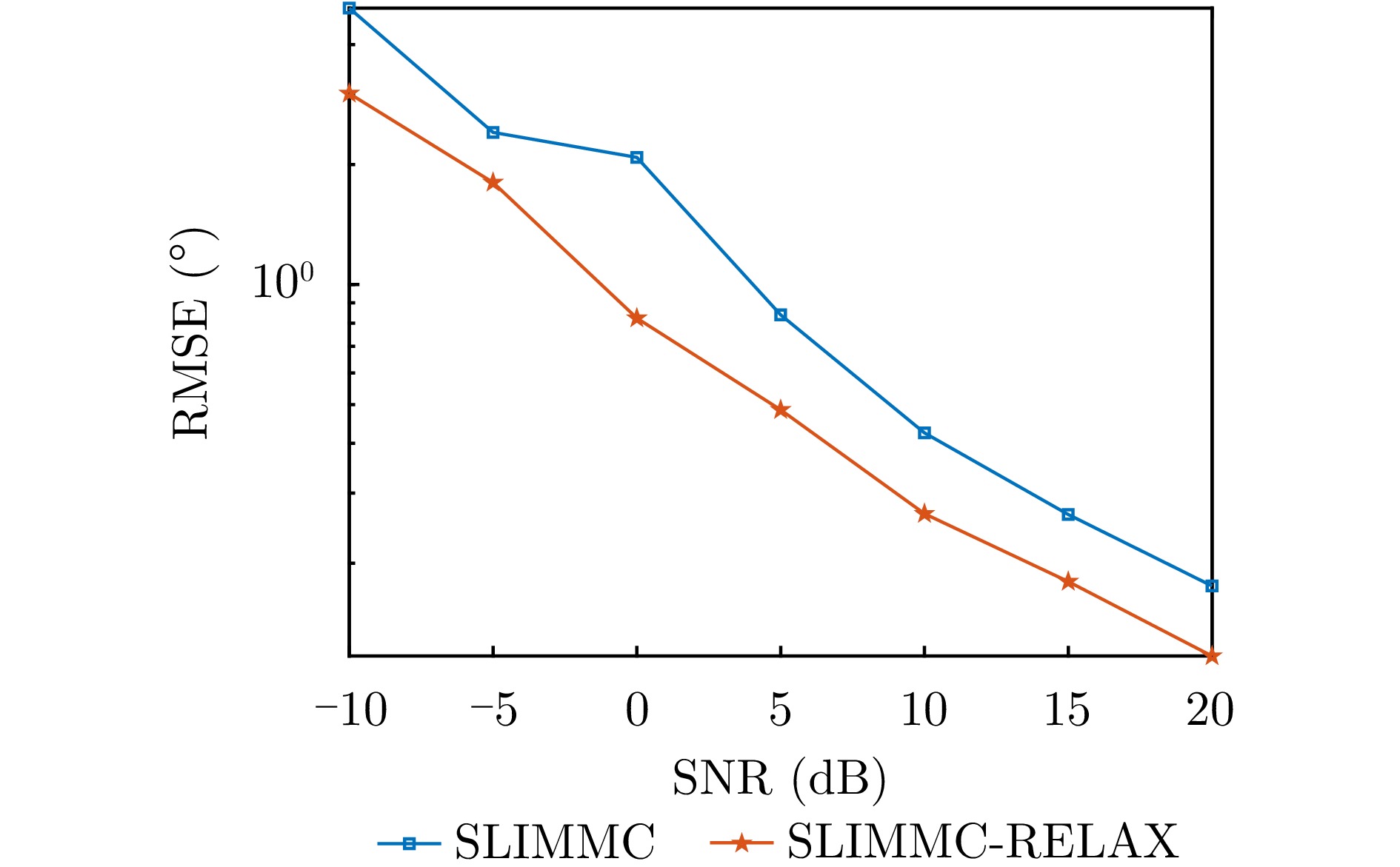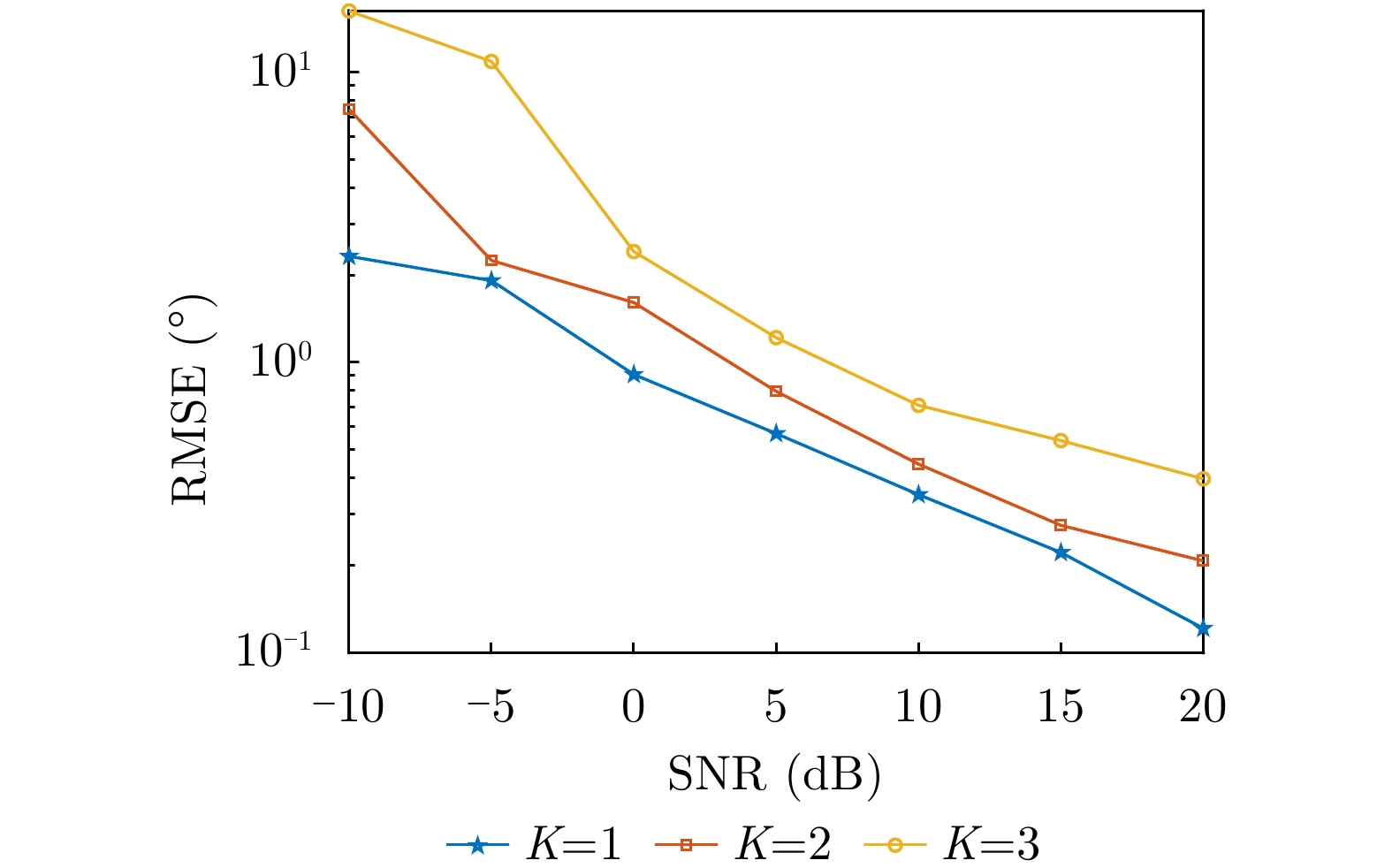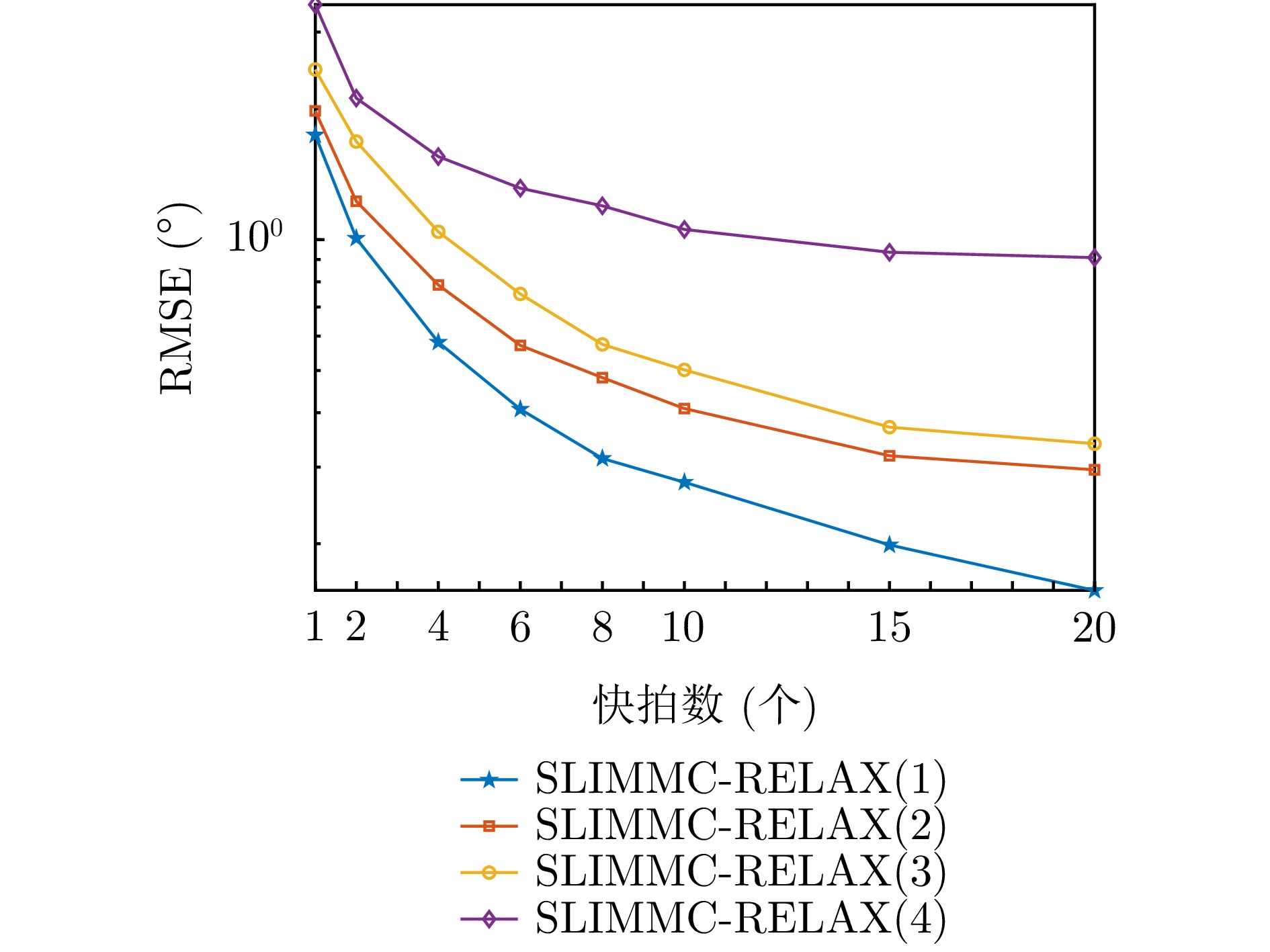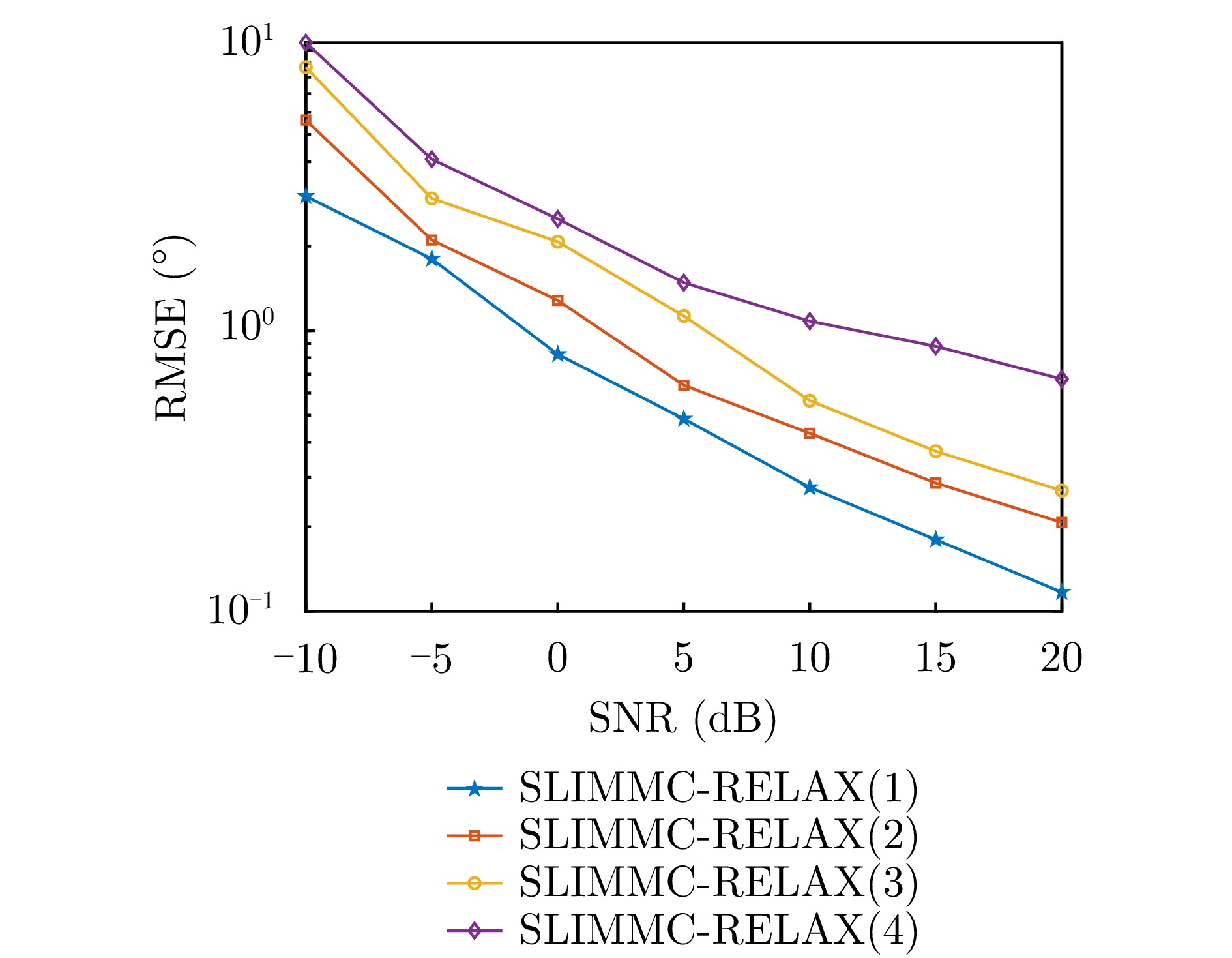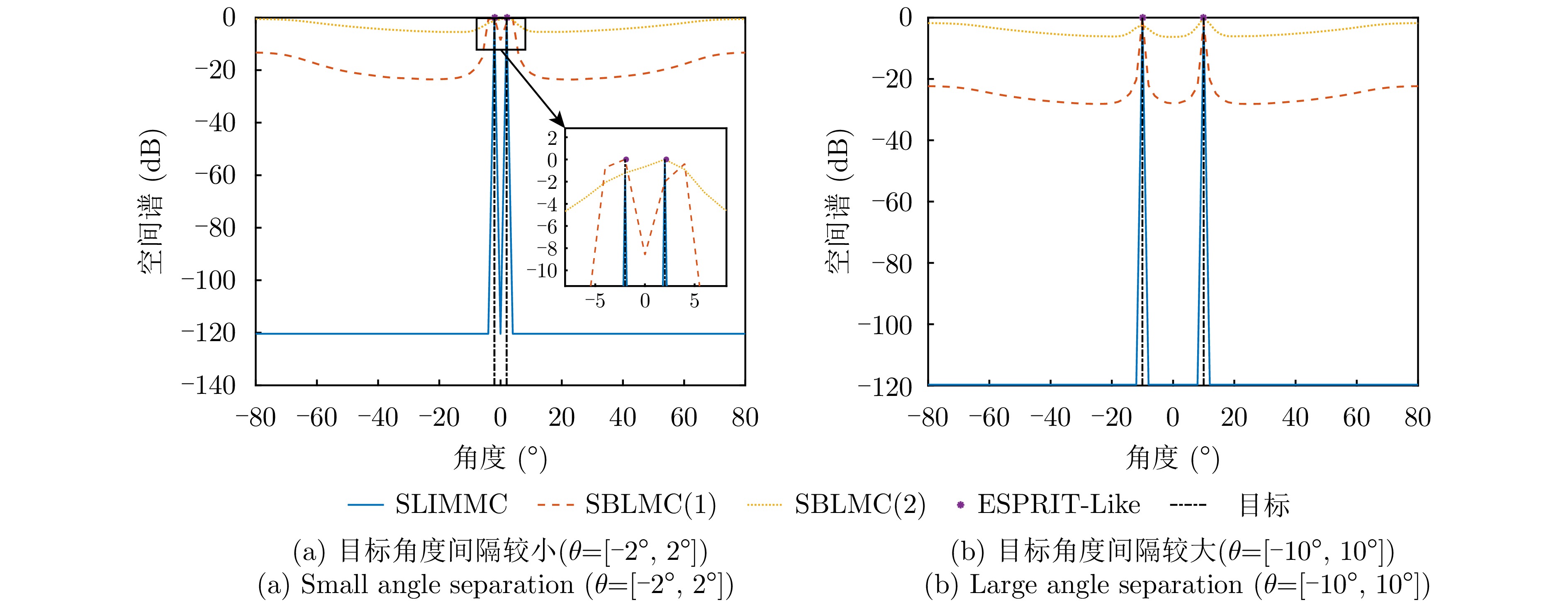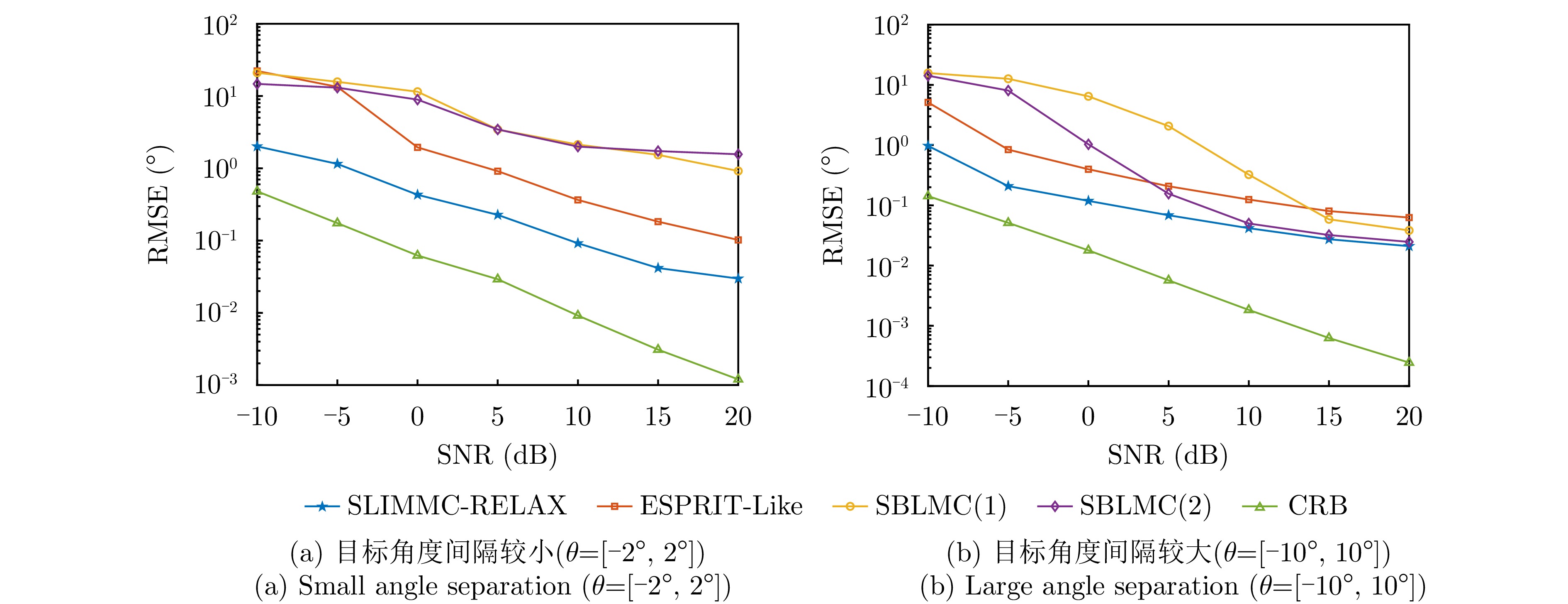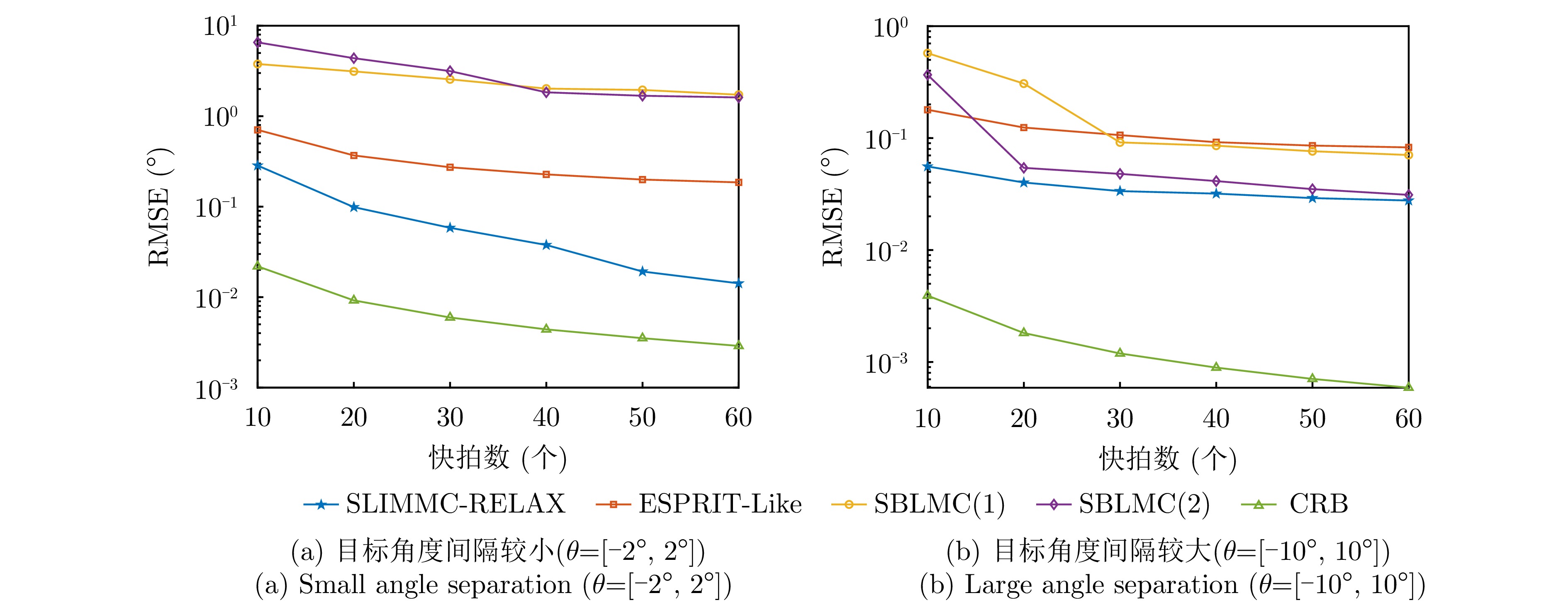| [1] |
LI Jian and STOICA P. MIMO Radar Signal Processing[M]. Hoboken: John Wiley & Sons, 2009. doi: 10.1002/9780470391488. |
| [2] |
HAIMOVICH A, BLUM R, and CIMINI L. MIMO radar with widely separated antennas[J]. IEEE Signal Processing Magazine, 2008, 25(1): 116–129. doi: 10.1109/MSP.2008.4408448. |
| [3] |
LI Jian and STOICA P. MIMO radar with colocated antennas[J]. IEEE Signal Processing Magazine, 2007, 24(5): 106–114. doi: 10.1109/MSP.2007.904812. |
| [4] |
何子述, 程子扬, 李军, 等. 集中式MIMO雷达研究综述[J]. 雷达学报, 2022, 11(5): 805–829. doi: 10.12000/JR22128. HE Zishu, CHENG Ziyang, LI Jun, et al. A survey of collocated MIMO radar[J]. Journal of Radars, 2022, 11(5): 805–829. doi: 10.12000/JR22128. |
| [5] |
张国鑫, 易伟, 孔令讲. 基于1比特量化的大规模MIMO雷达系统直接定位算法[J]. 雷达学报, 2021, 10(6): 970–981. doi: 10.12000/JR21062. ZHANG Guoxin, YI Wei, and KONG Lingjiang. Direct position determination for massive MIMO system with one-bit quantization[J]. Journal of Radars, 2021, 10(6): 970–981. doi: 10.12000/JR21062. |
| [6] |
LI Da, TANG Bo, and XUE Lei. Multi-spectrally constrained low-PAPR waveform optimization for MIMO radar space-time adaptive processing[J]. IEEE Transactions on Aerospace and Electronic Systems, 2023, 59(5): 5097–5110. doi: 10.1109/TAES.2023.3247976. |
| [7] |
TANG Bo and STOICA P. MIMO multifunction RF systems: Detection performance and waveform design[J]. IEEE Transactions on Signal Processing, 2022, 70: 4381–4394. doi: 10.1109/TSP.2022.3202315. |
| [8] |
吴文俊, 唐波, 汤俊, 等. 杂波环境中雷达通信一体化系统波形设计算法研究[J]. 雷达学报, 2022, 11(4): 570–580. doi: 10.12000/JR22105. WU Wenjun, TANG Bo, TANG Jun, et al. Waveform design for dual-function radar-communication systems in clutter[J]. Journal of Radars, 2022, 11(4): 570–580. doi: 10.12000/JR22105. |
| [9] |
杨婧, 余显祥, 沙明辉, 等. MIMO系统探通一体化信号矩阵设计方法[J]. 雷达学报, 2023, 12(2): 262–274. doi: 10.12000/JR22087. YANG Jing, YU Xianxiang, SHA Minghui, et al. Dual function radar and communication signal matrix design method for MIMO system[J]. Journal of Radars, 2023, 12(2): 262–274. doi: 10.12000/JR22087. |
| [10] |
LIU Chunlin and VAIDYANATHAN P P. Super nested arrays: Linear sparse arrays with reduced mutual coupling—part I: Fundamentals[J]. IEEE Transactions on Signal Processing, 2016, 64(15): 3997–4012. doi: 10.1109/TSP.2016.2558159. |
| [11] |
ZHENG Zhengzhi, WANG Wenqin, KONG Yangyang, et al. MISC array: A new sparse array design achieving increased degrees of freedom and reduced mutual coupling effect[J]. IEEE Transactions on Signal Processing, 2019, 67(7): 1728–1741. doi: 10.1109/TSP.2019.2897954. |
| [12] |
YAN Hangqi, WANG Yuexian, WANG Ling, et al. Design of nonredundant sparse planar arrays with reduced mutual coupling[J]. IEEE Transactions on Aerospace and Electronic Systems, 2024, 60(2): 1272–1283. doi: 10.1109/TAES.2023.3337216. |
| [13] |
AMANI N, JANSEN F, FILIPPI A, et al. Sparse automotive MIMO radar for super-resolution single snapshot DOA estimation with mutual coupling[J]. IEEE Access, 2021, 9: 146822–146829. doi: 10.1109/ACCESS.2021.3122967. |
| [14] |
LIU Xiaoli and LIAO Guisheng. Direction finding and mutual coupling estimation for bistatic MIMO radar[J]. Signal Processing, 2012, 92(2): 517–522. doi: 10.1016/j.sigpro.2011.08.017. |
| [15] |
ZHENG Zhidong, ZHANG Jin, and ZHANG Jianyun. Joint DOD and DOA estimation of bistatic MIMO radar in the presence of unknown mutual coupling[J]. Signal Processing, 2012, 92(12): 3039–3048. doi: 10.1016/j.sigpro.2012.06.013. |
| [16] |
XU Yang and ZHENG Zhi. Joint DOD and DOA estimation for bistatic MIMO radar in the presence of unknown mutual coupling[J]. Circuits, Systems, and Signal Processing, 2023, 42(4): 2468–2479. doi: 10.1007/s00034-022-02201-5. |
| [17] |
TIAN Ye, WANG Ran, CHEN Hua, et al. Real-valued DOA estimation utilizing enhanced covariance matrix with unknown mutual coupling[J]. IEEE Communications Letters, 2022, 26(4): 912–916. doi: 10.1109/LCOMM.2022.3148260. |
| [18] |
YANG Kang, WEN Fangqing, HUANG Dongmei, et al. Real-value-based trilinear decomposition based direction estimation algorithm for bistatic MIMO radar in the presence of mutual coupling[J]. Systems Engineering and Electronics, 2018, 40(2): 314–321. doi: 10.3969/j.issn.1001-506X.2018.02.12. |
| [19] |
WANG Xianpeng, MENG Dandan, HUANG Mengxing, et al. Reweighted regularized sparse recovery for DOA estimation with unknown mutual coupling[J]. IEEE Communications Letters, 2019, 23(2): 290–293. doi: 10.1109/LCOMM.2018.2884457. |
| [20] |
ROCCA P, HANNAN M A, SALUCCI M, et al. Single-snapshot DOA estimation in array antennas with mutual coupling through a multiscaling BCS strategy[J]. IEEE Transactions on Antennas and Propagation, 2017, 65(6): 3203–3213. doi: 10.1109/TAP.2017.2684137. |
| [21] |
HAWES M, MIHAYLOVA L, SEPTIER F, et al. Bayesian compressive sensing approaches for direction of arrival estimation with mutual coupling effects[J]. IEEE Transactions on Antennas and Propagation, 2017, 65(3): 1357–1368. doi: 10.1109/TAP.2017.2655013. |
| [22] |
CHEN Peng, CAO Zhenxin, CHEN Zhimin, et al. Off-grid DOA estimation using sparse Bayesian learning in MIMO radar with unknown mutual coupling[J]. IEEE Transactions on Signal Processing, 2019, 67(1): 208–220. doi: 10.1109/TSP.2018.2881663. |
| [23] |
FRIEDLANDER B and WEISS A J. Direction finding in the presence of mutual coupling[J]. IEEE Transactions on Antennas and Propagation, 1991, 39(3): 273–284. doi: 10.1109/8.76322. |
| [24] |
ZHOU Jianxiong, ZHU Rongqiang, and LI Haorun. Mutual coupling compensation for compact MIMO radar[J]. IEEE Transactions on Antennas and Propagation, 2022, 70(7): 6018–6023. doi: 10.1109/TAP.2022.3161333. |
| [25] |
ZHU Jingjing, ZHU Shengqi, XU Jingwei, et al. Adaptive detectors for FDA-MIMO radar with unknown mutual coupling[J]. IEEE Signal Processing Letters, 2023, 30: 1437–1441. doi: 10.1109/LSP.2023.3321555. |
| [26] |
LIU Long, ZHANG Hu, LAN Lan, et al. Joint range and angle estimation by FDA-MIMO radar with unknown mutual coupling[J]. IEEE Transactions on Aerospace and Electronic Systems, 2023, 59(4): 3669–3683. doi: 10.1109/TAES.2022.3230383. |
| [27] |
XU Luzhou, ZHAO Kexin, LI Jian, et al. Wideband source localization using sparse learning via iterative minimization[J]. Signal Processing, 2013, 93(12): 3504–3514. doi: 10.1016/j.sigpro.2013.04.005. |
| [28] |
ZHANG Kun and SHUI Penglang. Estimation of complex high-resolution range profiles of ships by sparse recovery iterative minimization method[J]. IEEE Transactions on Aerospace and Electronic Systems, 2021, 57(5): 3042–3056. doi: 10.1109/TAES.2021.3068431. |
| [29] |
WU Chaoyi, REN Jiaying, TAN F W, et al. Computationally efficient implementation of SLIM for parameter estimation in few-bit PMCW MIMO radar systems[J]. IEEE Transactions on Radar Systems, 2023, 1: 339–352. doi: 10.1109/TRS.2023.3284297. |
| [30] |
张贤达. 矩阵分析与应用[M]. 2版. 北京: 清华大学出版社, 2013.
ZHANG Xianda. Matrix Analysis and Applications [M]. 2nd ed. Beijing: Tsinghua University Press, 2013.
|
| [31] |
WU Jinlong, WEN Fangqing, and SHI Junpeng. Direction finding in bistatic MIMO radar with direction-dependent mutual coupling[J]. IEEE Communications Letters, 2021, 25(7): 2231–2234. doi: 10.1109/LCOMM.2021.3072310. |
| [32] |
LI Jian and STOICA P. Efficient mixed-spectrum estimation with applications to target feature extraction[J]. IEEE Transactions on Signal Processing, 1996, 44(2): 281–295. doi: 10.1109/78.485924. |
| [33] |
WU Chaoyi, ZHANG Tianyi, LI Jian, et al. Parameter estimation in PMCW MIMO radar systems with few-bit quantized observations[J]. IEEE Transactions on Signal Processing, 2022, 70: 810–821. doi: 10.1109/TSP.2022.3146790. |




 Submit Manuscript
Submit Manuscript Peer Review
Peer Review Editor Work
Editor Work

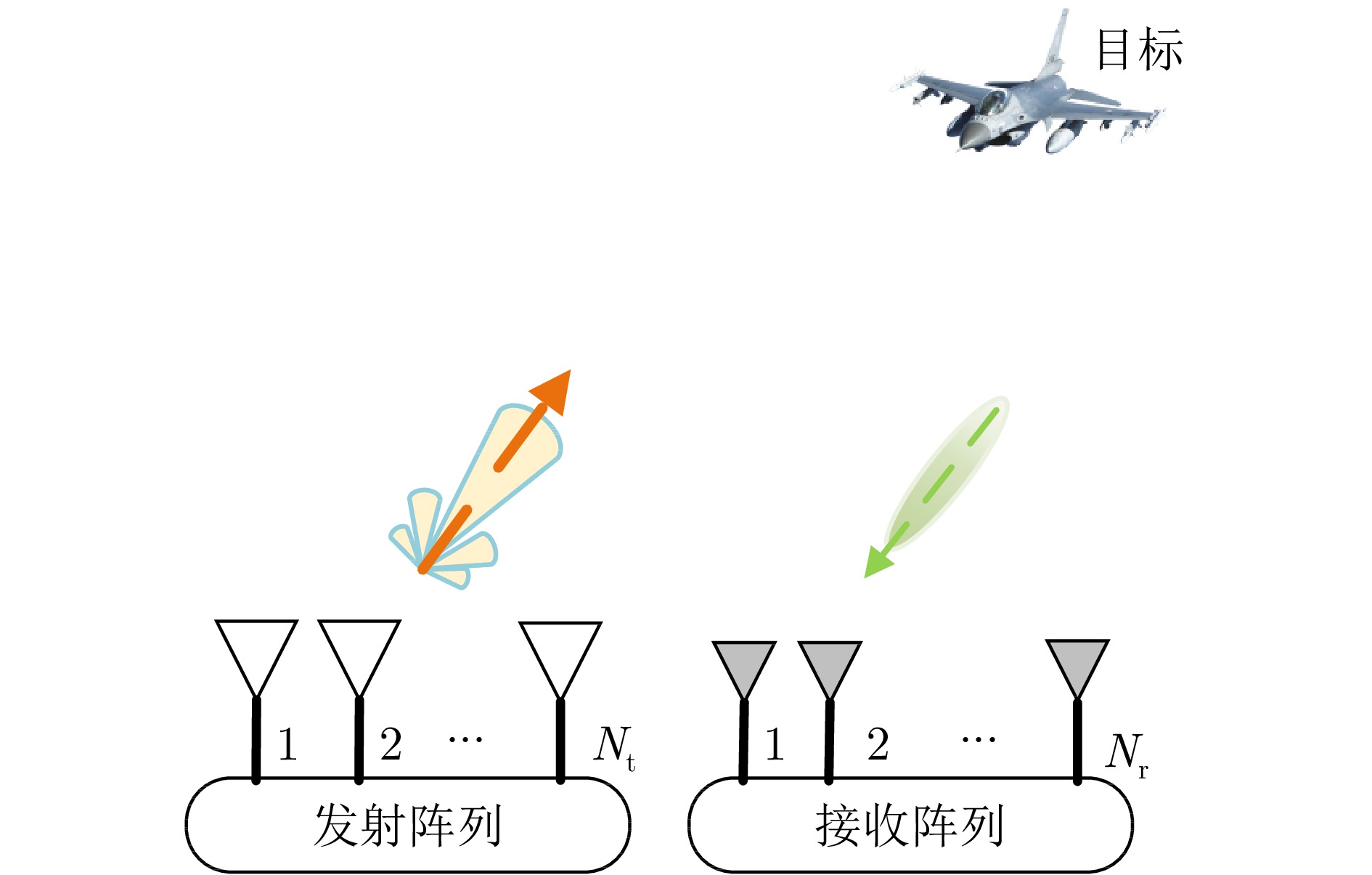



 DownLoad:
DownLoad:
